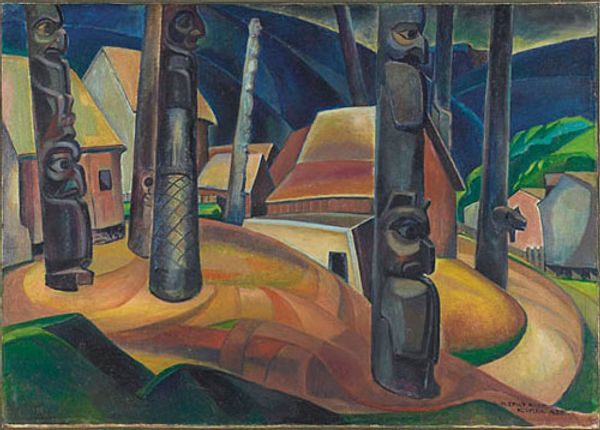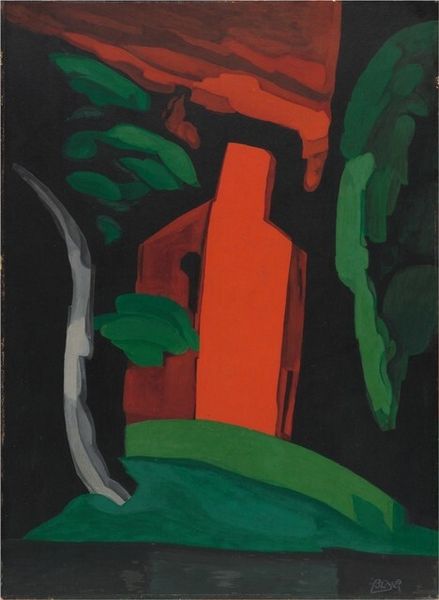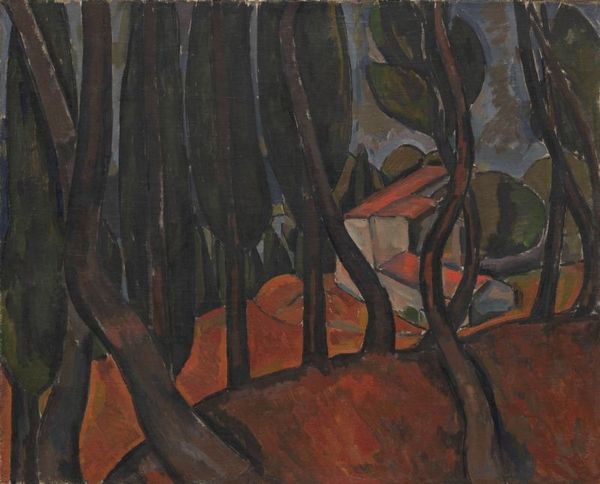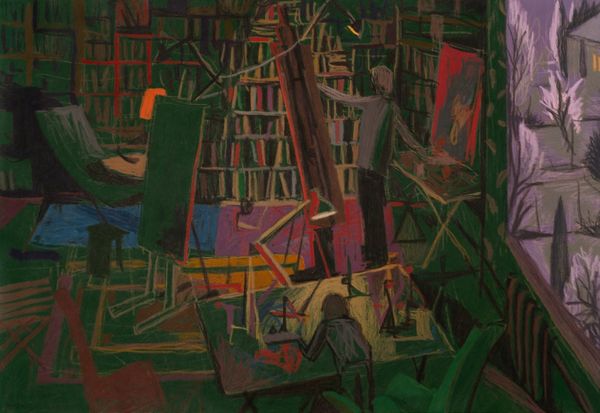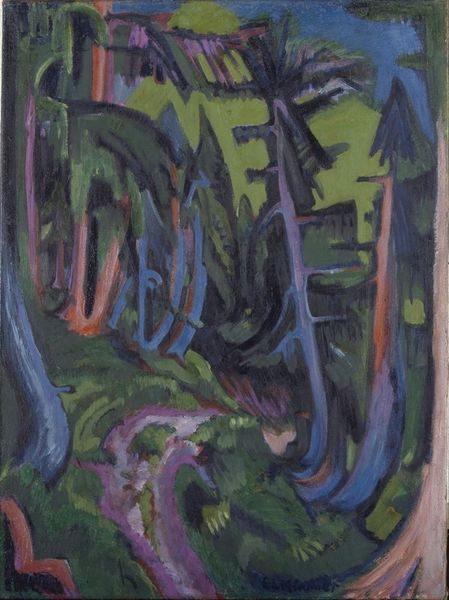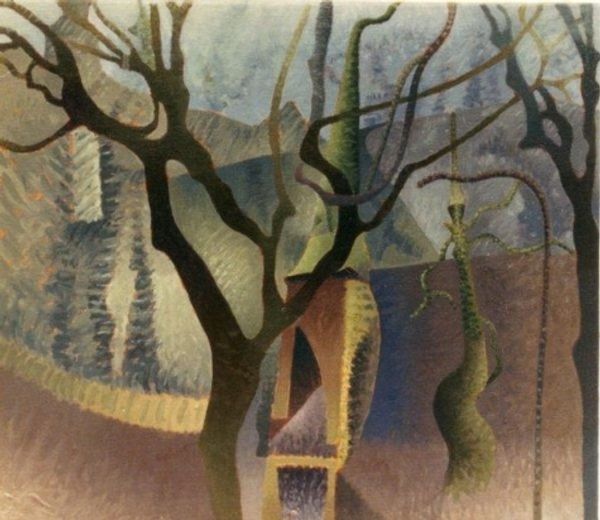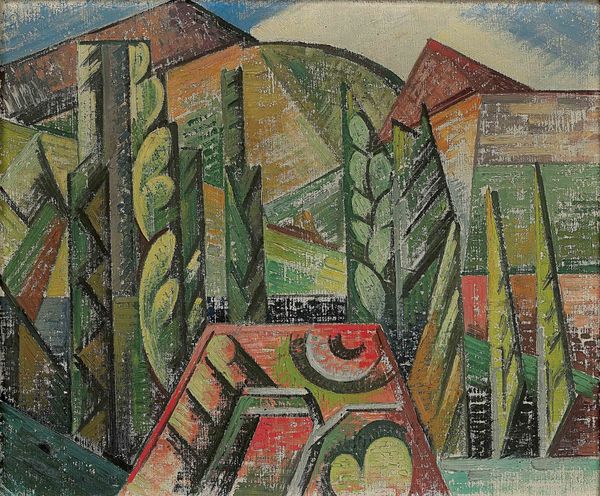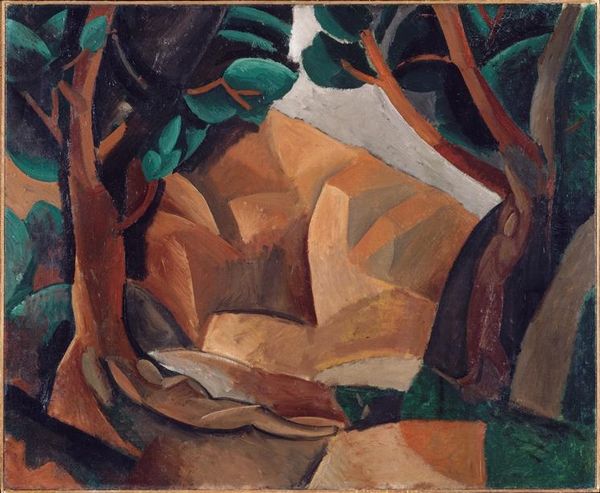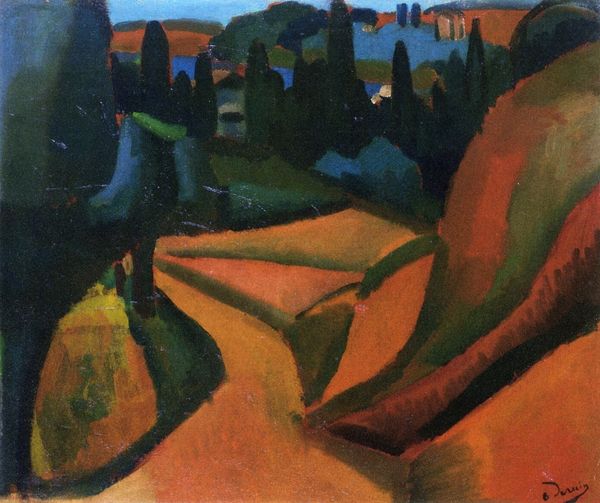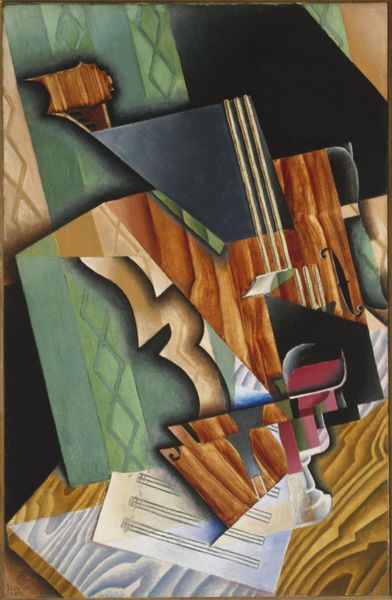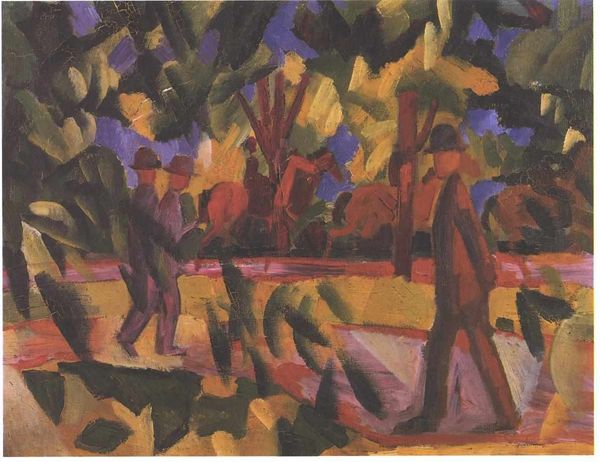
painting, oil-paint
#
abstract painting
#
painting
#
oil-paint
#
landscape
#
impressionist landscape
#
oil painting
#
modernism
#
expressionist
Dimensions: 91.3 x 128.7 cm
Copyright: Public domain
Curator: Looking at "Old Time Coast Village" painted around 1930 by Emily Carr, the initial impression is undeniably somber. Editor: Somber is the word. There's an oppressive weight to those towering, monolithic tree forms, and the pervasive green seems almost suffocating. But tell me, what specific material aspects define this effect? Curator: Primarily, the medium is oil paint, applied with a dynamism that imbues the forms with a vital energy even as they loom imposingly. The layering of the paint—the impasto in those foreground trees, for example—creates a tactile sense of volume and depth. The paint becomes a substance through which to better understand the world. Editor: Right. And that's not just about volume; it also speaks to the process. Carr's application of oil—thick, deliberate strokes—feels less like representation and more like an act of constructing, of materially manifesting the very essence of these trees. Considering its creation in the 1930s, what can be said about Carr's perspective or approach to the natural environment and perhaps First Nations communities? Curator: Carr lived among British Columbia’s Indigenous peoples. The modernist abstraction suggests a symbolic, rather than literal, representation of this cultural relationship within the environment. Editor: And there's the village—small, almost overwhelmed by the landscape, suggesting maybe the human imprint and social life is but one texture in a complex relationship. Considering all this texture, does her focus on technique and natural materials elevate something, or overshadow its subjects? Curator: Technique enhances it by conveying, with feeling, the relationship to landscape rather than simple replication. This landscape isn’t only physical, but intensely felt and rendered in its formal arrangement to stir feelings beyond visual recognition. Editor: Right, a collaboration where labor, material, and composition all drive emotional understanding in tandem. Curator: Precisely. It’s more than just a painting; it’s a constructed emotion around how landscape influences cultural identity and perspective. Editor: I agree, thank you for that. This has certainly sharpened my awareness of material significance within the picture. Curator: You're welcome. Exploring that reciprocal play allows a richer understanding of Carr’s project overall.
Comments
No comments
Be the first to comment and join the conversation on the ultimate creative platform.
